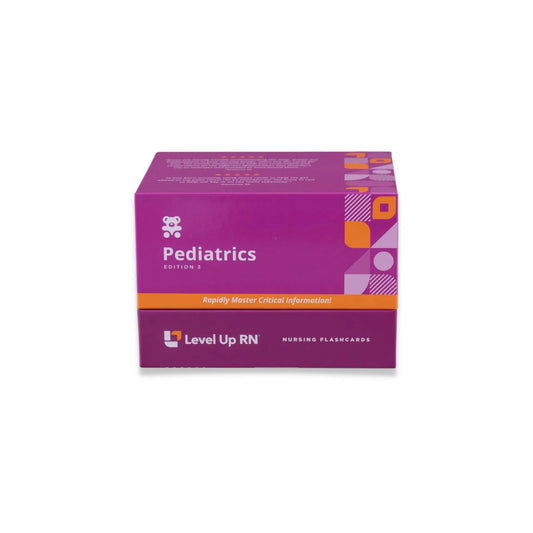Peds, part 42: Musculoskeletal Disorders - Developmental Dysplasia of the Hip
Updated: Cathy ParkesDevelopmental Dysplasia of the Hip (DDH). What DDH is, risk factors for DDH, signs and symptoms of DDH, diagnosis of DDH, and treatment of DDH. Important information regarding a Pavlik harness.
Full Transcript: Peds, part 42: Musculoskeletal Disorders - Developmental Dysplasia of the Hip
Full Transcript: Peds, part 42: Musculoskeletal Disorders - Developmental Dysplasia of the Hip
Hi, I'm Cathy with Level Up RN. In this video, I will be discussing developmental dysplasia of the hip or DDH, and I will also go into details about a Pavlik harness. And at the end of the video, I'm going to give you guys a little quiz to test your knowledge of some of the key points I'll be covering so definitely stay tuned for that. And if you have our Level Up RN pediatric nursing flashcards, definitely pull those out and follow along with me and be sure to pay close attention to the bold red text on these cards because the topics that I'm going to be going over are heavily tested on in nursing school. Developmental dysplasia of the hip is dislocation or instability of the hip joint. With this disorder, there is abnormal development of the hip joint when the baby is in the uterus. And this results in misalignment of the femur and acetabulum.
So the hip joint is a ball and socket joint. The ball is the femoral head and the socket is the acetabulum, which is part of the pelvic bone. So with developmental dysplasia of the hip, the femoral head slips out of the acetabulum, either partially or fully. In terms of risk factors, developmental dysplasia of the hip is more common in females. It is also more common in babies born in a breech position and when there is a family history of DDH. Signs and symptoms include the leg appearing shorter on the affected side, asymmetric skin folds on the thighs or buttocks, and limited range of motion of the hip joint. And then once the child is walking, symptoms can include an asymmetric gait. Pediatric providers routinely screen all babies for developmental dysplasia of the hip. Two key techniques used to screen for this disorder include a Barlow and Ortalani maneuver. So during these tests, the provider will apply gentle pressure to the infant's thighs and move the femoral head in the acetabulum. And they will listen for clicks, clunks, and pops. So in nursing school, you typically don't need to know the specific technique used for each of these tests. But you do need to know that a positive Barlow test or a positive Ortalani test is indicative of DDH. And then this diagnosis would be confirmed with an ultrasound or X-ray.
Treatment of DDH includes a Pavlik harness for infants under the age of six months, and then for children over the age of six months, surgery is typically required and a hip spica cast is placed for a period of time. So let's now go over some important details regarding a Pavlik harness. A Pavlik harness keeps the baby's legs apart and their legs turned outward. Kind of like a frog leg position. Of note, the former practice of treating DDH with double and triple diapering to keep the baby's legs in a similar position is not recommended. Family teaching for a Pavlik harness is definitely important to know in nursing school, and this information would lend itself well to a select all-that-applies type question. So a Pavlik harness needs to be worn for at least 23 hours a day and for at least six weeks. It's important that families assess their baby's skin several times a day and gently massage their baby's skin under the straps. Lotions and powders should be avoided, and then the baby should wear an undershirt and socks under the harness. The baby's diaper should be placed under the straps, and it's important that families understand that they should not adjust the harness themselves. There will be follow-up appointments with the provider every one to two weeks for evaluation and adjustment of the straps.
All right, it's quiz time, and I've got three questions for you. Question number one, what two maneuvers are used to screen for developmental dysplasia of the hip? The answer is a Barlow maneuver and an Ortalani maneuver. Question number two, what is the treatment for developmental dysplasia of the hip in infants under 6 months of age? The answer is a Pavlik harness. Question number three, how many hours per day should the Pavlik harness be worn? The answer is at least 23 hours per day. All right, I hope you did great with that quiz. I hope you found this video to be helpful. If so, be sure to hit that like button and leave me a comment. I would love to hear from you. Take care, and good luck with studying.


